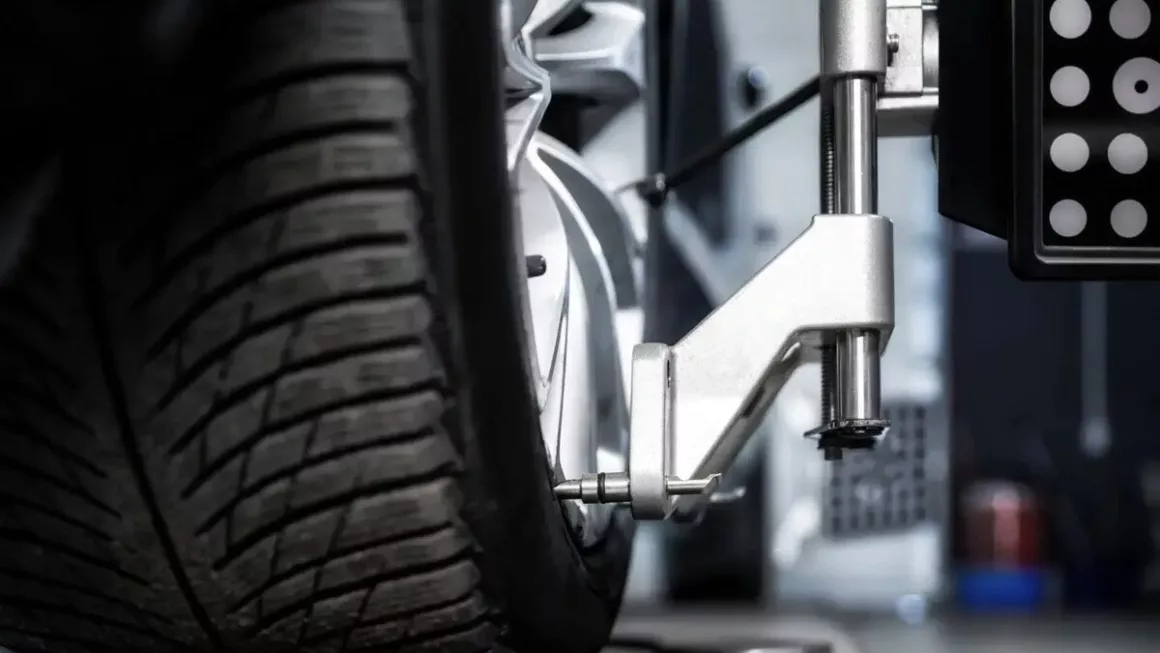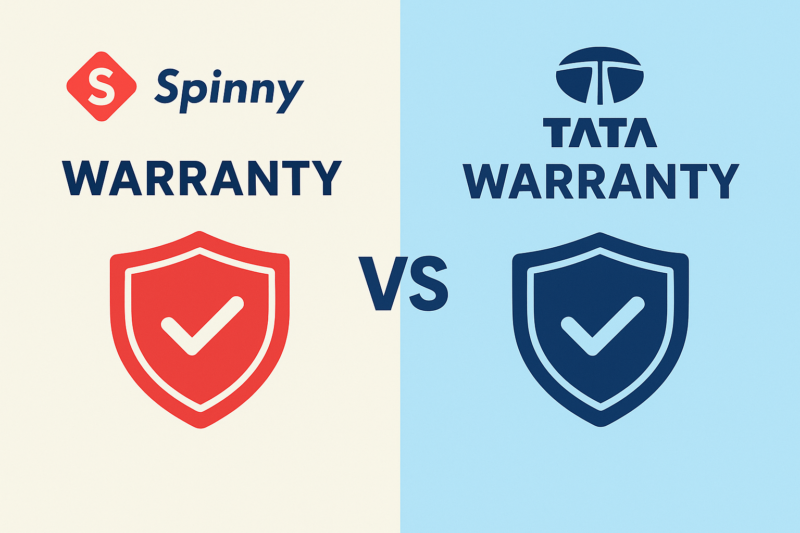Being in control of the things you do is important, especially when it comes to operating machines. Therefore, while driving a car, it is of utmost importance for the driver to have a strong control over it. To control a driving car, you need to control its wheels. The better you control them the better it is for your safety and for the safety of passengers and other vehicles on the road.
All the same, even if you are one of the best drivers, it is next to impossible to keep proper control over unaligned wheels while driving. Moreover, losing control over the vehicle due to unaligned wheels can cause fatal accidents. To avoid accidents and ensure proper safety, your car’s wheel alignment and balance should be accurate. In this article, we take a closer look at wheel alignment, balancing, and tyre rotation, so that you can keep the wheels of your car in proper shape and position.
ALSO READ: Active Safety Features: Everything you need to know
Table of Contents
- Wheel Alignment
- What is wheel alignment?
- Causes of the Wheel Alignment going off
- How do you get to know your wheel alignment is off?
- Wheel Balancing
- How is wheel balancing done?
- How often should you get wheel alignment and balancing done?
- Tyre rotation
- Four-Wheel Rotation
- Five-Wheel Rotation
- Summary
- FAQ
Wheel Alignment
A common misconception about wheel alignment is that the process involves only a simple adjustment of the wheels. Wheel alignment refers to the adjustment of the car’s suspension in order to achieve a suitable angle at which the tyres make contact with the road. This helps you accurately steer the car and make correct directional changes.
What is wheel alignment?

The wheel alignment is the alignment of all four wheels of a car with respect to each other and the car’s body. In other words, wheel alignment helps us know if the wheels of a car are poised as needed. It is not hard to know if the wheels of a car are properly aligned, because any problem with the car’s wheel alignment can affect its suspension, and the driver may feel uneasy while handling the steering.
Causes of the Wheel Alignment going off
You might wonder, if all new vehicles come with their wheels properly aligned, exactly what causes faulty wheel alignment. Here we take a closer look at some of the reasons which cause faulty wheel alignment:
- The impact caused to your car while going over a pothole, bumping into a kerb, hitting road debris like rocks or even hitting a speed breaker too fast might affect the wheel alignment.
- There is a possibility of the shock absorbers or struts getting worn out or loose, leading to wheel alignment problems.
- Vehicle modifications such as lifting. The suspension is intended to work within a specified height determined by the manufacturer. If the height of the vehicle is modified, the suspension must be well adjusted, otherwise you risk misaligning the wheels of your vehicle.
ALSO READ: Types of Brakes: A Comprehensive Guide
How do you get to know your wheel alignment is off?
Certain conditions and circumstances help you suspect the faulty wheel alignment of your car. Here are some common signs.
- Steering Wheel: You find that the manufacturer’s logo of the steering wheel is not straight. You might also feel that the steering vibrates, while your vehicle is in motion; it is often caused by misaligned or unbalanced tyres.
- Steering Pulling: You might realise that you have to fight the steering wheel to prevent your car sliding left or right, while driving straight. If it drifts or swerves to a particular side, it is a clear sign that the wheel alignment is off.
- Uneven Tyre wear: This is one of the most common signs of a wheel misalignment. If all of your car’s tyres do not have the same wear pattern on the tread, their alignment is likely to be off. A car mechanic or tyre specialist will be able to quickly examine the tread and determine if there are signs of a misalignment. Poor alignment can shorten a tyre’s life by thousands of miles and can harm critical steering and suspension parts.
Wheel Balancing

After wheel alignment, we move to the wheel balancing of a car. Wheel balancing refers to the alignment between the weights of all tyre and wheel combinations of a car. It means, the weight of one wheel assembly which consists of one wheel and the tyre it holds, should remain in equilibrium with all other wheel assemblies of a car. If such equilibrium is not maintained, it can hamper the drive quality and damage the suspension of your car.
It can also lead to poor fuel economy.
How is wheel balancing done?

The professionals use a wheel balancer to detect unbalanced areas of the tyre and rim assembly. To compensate for the imbalance, he then places the weights on the outside and inside of the rim, in the locations detected by the machine.. The exact process of wheel balancing is described below.
- All tyres and wheel assemblies are removed from the car.
- Each wheel is mounted on a balancing machine.
- The machine spins each wheel to make sure that the weights of the wheel and tyre are balanced evenly around the axle.
- Both static and dynamic imbalances are detected and located, because wheels are checked at rest and in motion.
- A lead weight is attached on the opposite side of the tyre to compensate for weight differences
- Then the tyres and wheels are remounted on the car.
How often should you get wheel alignment and balancing done?
Wheel alignment and balancing should be done when:
- A tyre is replaced or repaired.
- Any balance weight attached during wheel-balancing is moved or falls off.
- You notice uneven wear in your tyres.
- New tyres are purchased and installed on your car.
- Your car has had a particularly bad impact or accident.
- You replace steering or suspension components.
ALSO READ: Types of Car Engines
Tyre rotation

Tyre rotation means swapping the location of tyres on a car – either front to back or side to side. This is done because on every car, tyres at different positions wear at different rates. Since most cars have front-wheel-drive, the front tyres wear faster given they are on the drive axle. Or vice versa for the cars with rear-wheel-drive.Tyre rotation evens out the level of wear across the tyres and maximises their potential. You should rotate the tyres as recommended by the vehicle manufacturer, or every 8000 kilometres. For many of you, that will mean when you get your vehicle’s oil changed.
Regularly rotating your tyres will also give you the good opportunity to visually inspect them. You can look out for damage, check their air pressure, have them rebalanced if you are noticing any vibration, and check their tread depth.
Four-Wheel Rotation
- Front-Wheel Drive: The front wheels are to be installed on their corresponding rear hubs. The rear left wheel is used as the spare wheel while the spare wheel is to be installed in place of the front right wheel. The rear right wheel then goes in place of the front left wheel, and hence the rotation is done.
- Rear-Wheel and All-Wheel Drive: The front wheels are crisscrossed and installed on the opposite rear wheel hubs. The rear left wheel then gets installed on the front left wheel hub, while the spare wheel gets installed on the front right wheel hub. The rear right wheel goes in the place of the spare wheel, and the rotation is completed.
Five-Wheel Rotation
- Front-Wheel Drive: The front wheels are installed on their corresponding rear wheel hubs. The rear left wheel is then used as the spare wheel, while the spare wheel is to be installed in place of the front right wheel. The rear right wheel then goes in place of the front left wheel and hence rotation is completed.
- Rear-Wheel and All-Wheel Drive: The front wheels are crisscrossed and installed on opposite rear wheel hubs. The rear left wheel then gets installed on the front left wheel hub while the spare wheel gets installed on the front right wheel hub. The rear right wheel then goes in place of the spare wheel, and hence the rotation is completed.
ALSO READ: Types of Tyres: How To Choose The Best Tyre For Your Car
Summary
The wheels and tyres and some of the most essential parts of a car, and their maintenance requires proper wheel alignment and balancing, and timely tyre rotation. Wheel alignment is a mechanical adjustment of a vehicle’s suspension system to ensure the wheels are in the correct position. Wheel balancing is the process of distributing the weight of a vehicle’s wheels and tyres evenly so they spin smoothly at high speeds. Tyre rotation is the process of moving a car’s tyre to different positions to ensure even wear and extend their lifespan.
All these practices are extremely important to ensure the good health of your car’s wheel assemblies. Moreover, it’s worth bearing in mind, inadequate care of the wheel assemblies can cause fatal accidents. Nevertheless, with this article in hand, you can get a complete understanding of wheel alignment, balancing, and tyre rotation, so that you can properly maintain your car and enjoy several years of happy motoring.
FAQ
Q: Does a tyre rotation include alignment?
A: Although tyre rotations and wheel alignments are separate services, it is easy to have them scheduled together to save you time at the repair shop.
Q: When should tyre rotation and wheel alignment be done?
A: Tyre rotation should be performed every 8,000 kms, according to your tyre manufacturer’s recommendations. Wheel alignments are usually not needed as often as you can wait 10,000 – 15,000 kms when you notice symptoms of problems with your alignment.
Q: How long should an alignment take?
A: Under normal circumstances, a wheel alignment will take an average of one hour, whether it’s a two or a four wheel vehicle. If there is too much wear and tear or damage on the suspension system, steering blushing, track rod, it will take a longer time to get these components replaced.





